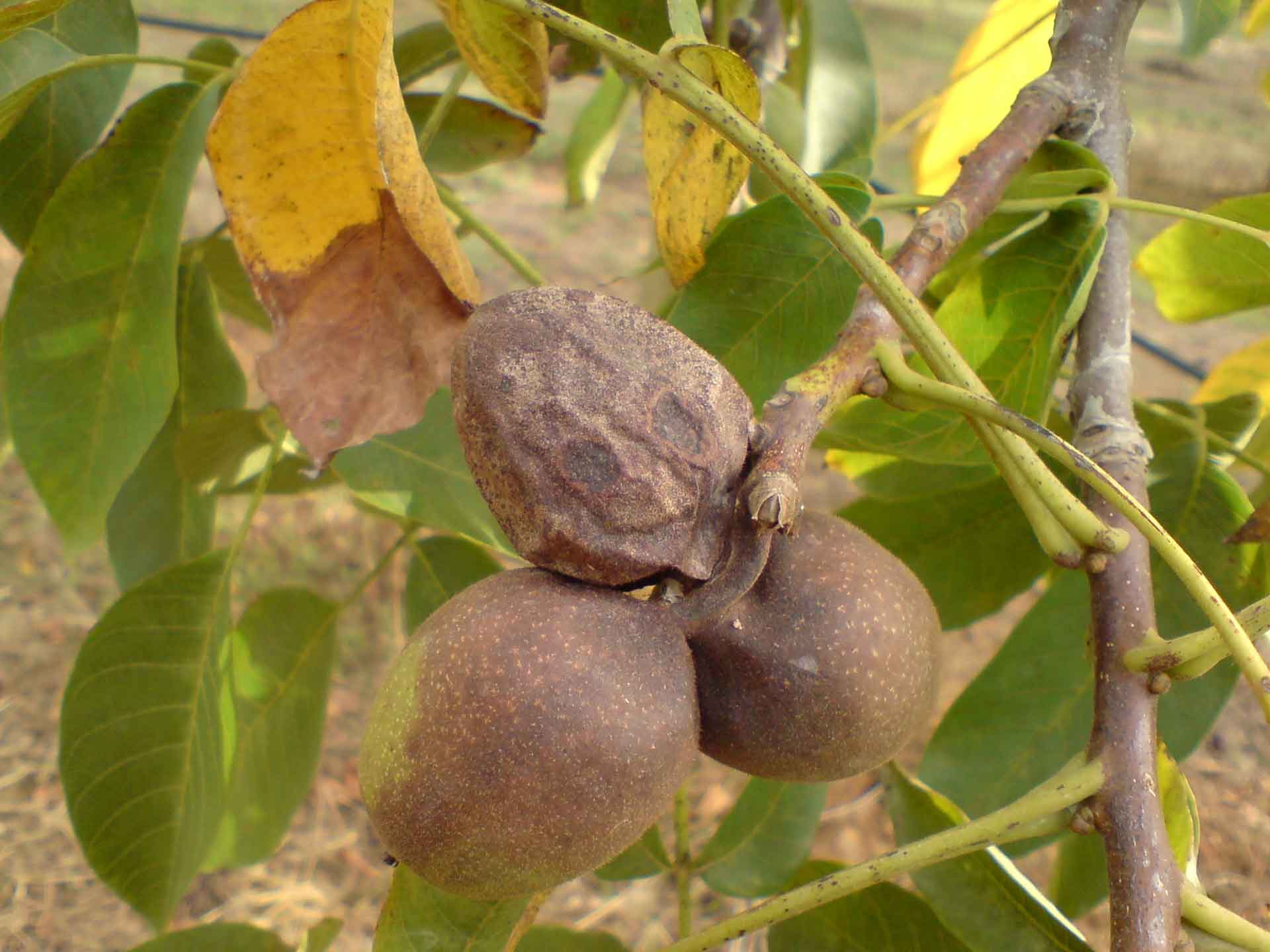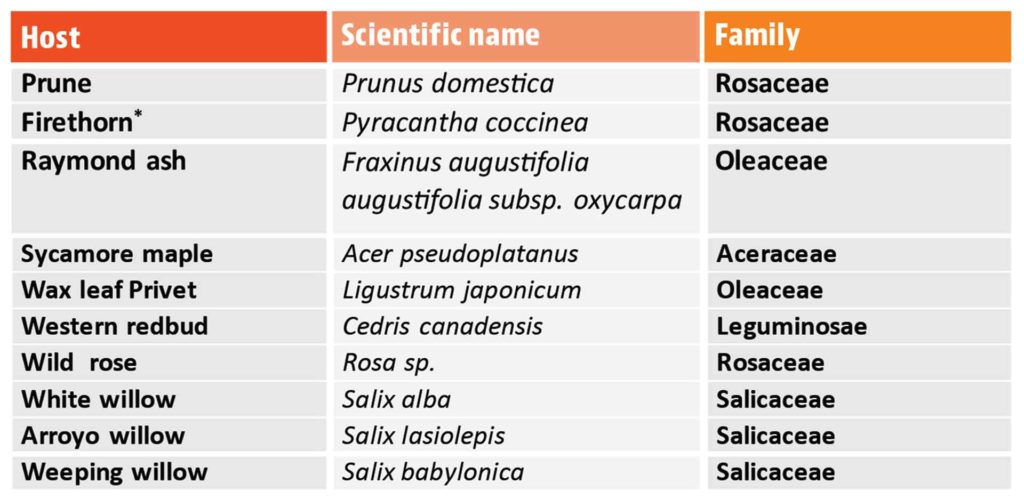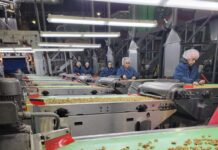In the last decade or so, we observed an unusual high incidence of diseases caused by fungi in the family of Botryosphaeriaceae known as Bot cankers and blights. It was in 1985 when Dr. Michailides as a postdoctoral researcher started working with Bot of pistachio which initially was discovered in a few orchards in Butte County and was very severe in the first pistachio commercial orchard planted in Durham California. It took about 10-12 years until the disease became an epidemic among the pistachio growing acreage from the north (Butte, Glenn, and Tehama Counties) and Central (Merced, Madera, and Fresno Counties) to the south (Tulare, Kings, and Kern Counties). It was fortunate that some limited research was initiated in 1985 and continued until just the epidemic in 1997-1998. At that time the pistachio industry realizing the immense threat this disease was for the industry raised big monies to intensify the research and combat this disease. It is fortunate that after years of research, not only do we understand the disease cycle and the factors influencing the development of this disease, but also and most importantly we developed effective cultural, chemical and integrated control approaches.
The pistachio growers followed these approaches religiously and the disease does not impose a treat to the industry. Over the last decade or so we started observing how this disease has moved into various kinds of trees such as forest trees used as ornamentals in people’s yards, along city and town streets and parks, and farm roads (Redwood, Cedar, Pittosporum, Liquidambar, Willow and other trees) where one could spot the branch dieback and blight by just driving along side of these trees. By now, there is a large list of hosts that Botryosphaeriaceae fungi were isolated and cause severe problems in agricultural crops such as walnut, citrus, avocado, young almond and peach orchards, prune, and fig (Table 1).
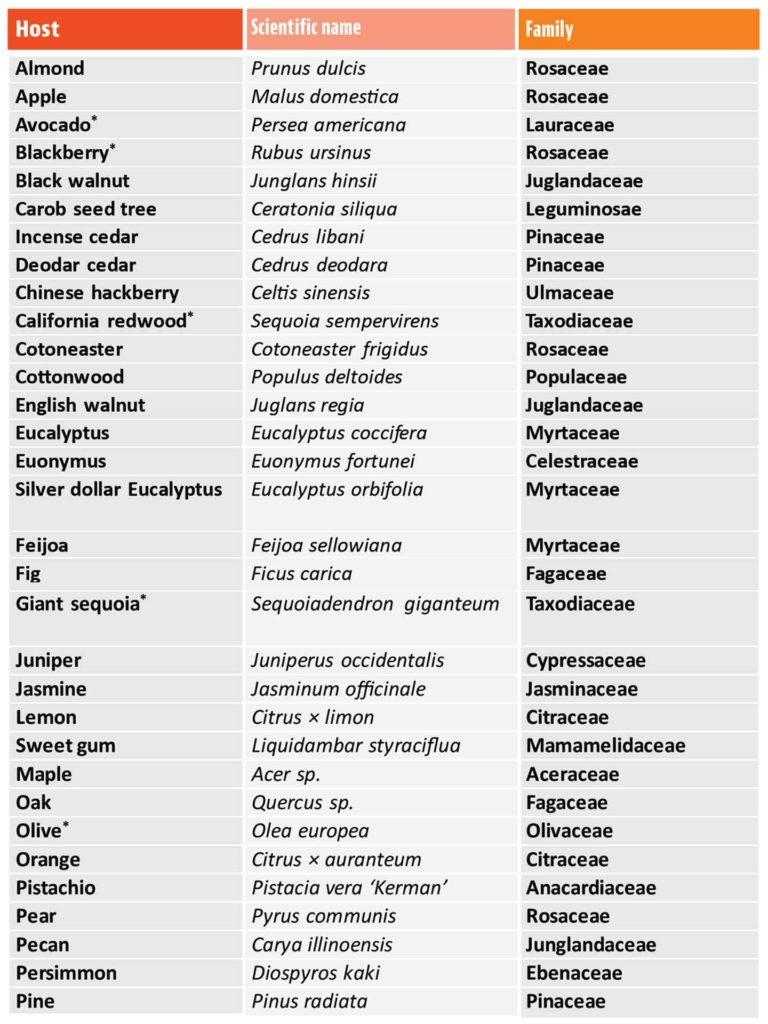
Riparian Vegetation
We found that initially orchards close to riparian vegetation (along creeks and irrigation canals with Willow, Cottonwood, and blackberries showed Bot problems since the inoculum of Botryosphaeriaceae was abundant in these trees and bushes next to commercial crops. In fact, the pattern of disease development showed higher levels close to the inoculum source than far from the source to even no disease at all at much farther from the inoculum source. These type of patterns were initially discovered in almond orchards and also in almonds close to walnuts with walnuts loaded with dead branches covered with Botryosphaeriaceae pycnidia.
Walnut Bot Canker and Blight
Although we were aware of the presence of Botryosphaeriaceae fungi on walnut about 20 years ago, it was only about 5 years ago that the industry felt that their orchards’ yields were decreasing instead of increasing in maturing orchards. Although the branch wilt disease, which caused by Neoscytalidium dimitiatum (which also belongs in the Botryosphaeriaceae fungal family) was reported 75 years ago on walnut, it was only 5 years ago when my laboratory showed that both Botryosphaeria and Phomopsis species cankers became of a major concern due to significant yield reductions.
In checking the literature longer than a century ago (1915) there was a report on a disease of English walnut that was named “melaxuma” of walnut by Howard and Fawcett published by the AES of University of California (UC) Berkeley. The cause of that disease was reported as Botryosphaeria ribis. Therefore, the walnut in California served as a host of these fungi since the early 19th century.
My laboratory crew started work on the Bot/Phomopsis canker and blight disease in 2014 with the support of the California Walnut Board. In these early studies we found out why the growers experienced a continuous reduction of yields. We determined how fruit are infected by a group of at least 10 different Botryosphaeriaceae and at least two Phomopsis species during the rains in the spring causing latent infections which then develop later as the fruit matures. These infections not only decay the hulls and blight the fruit that drops on to the ground, but and most importantly even after the fruit has dropped, the infections move from the fruit stem into the sustaining spur killing the fruiting and catkin buds, representing the crop of the following year. Now, if nothing is done to control the disease, there will be an accumulation of dead spurs all over the tree canopy. These dead spurs are eventually covered with pycnidia (that provide water-splashed spores) and pseudothecia (that provide airborne spores) and year after year provide the inoculum for new infections and an exponential built up of blighted spurs and dead buds.
Factors Affecting Bot Disease Development
One major factor affecting disease incidence and severity is the walnut scale or scales of walnut are shoots infested by scale. They become weak and infections can start from their sites where they feed. When shoots infested by walnut scale were inoculated with two Botryosphaeriaceae species, 60-75 percent more shoots were infected when the scales were present than when they were not infested by scale.
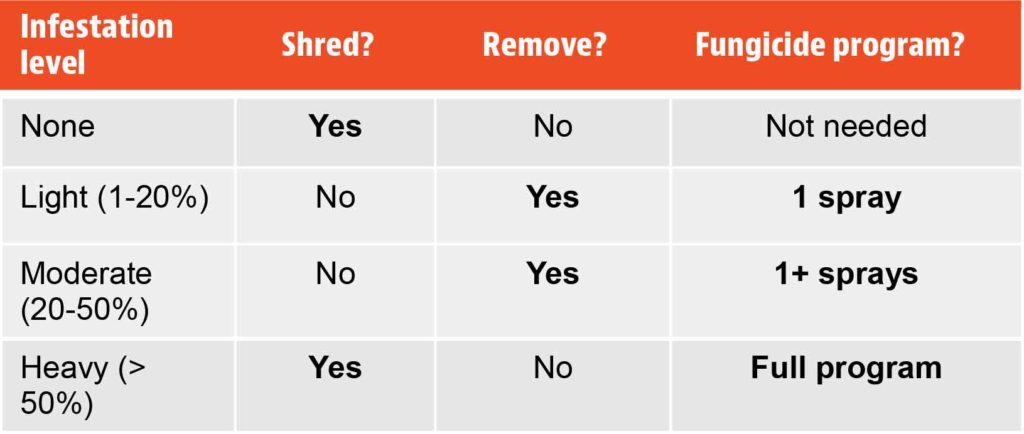
Another major factor is free water on the surface of fruit and leaves (rain or sprinkler irrigation). If a grower uses impact sprinklers with high trajectory angle, the canopy gets wet and creates conditions favorable for the disease to develop. Infections by spores of Botryosphaeriaceae require at least ¼ of an inch water and at least 50 F. When these conditions are met infections can occur.
Another important factor affecting levels of disease in the orchard is the creation of wounds. Any type of wound (pruning, sunburn, frost, herbicide, hail, bird, and mechanical wounds) can be infected if inoculum is present in the orchard and the conditions are met as indicated above. Infections of pruning wounds is very significant because in orchards where hedging is done there are plenty of pruning wounds of different age wood. In artificial inoculation of wounds, we showed that the cankers are at least twice as long on three to four year-old branches as those on one- to two-year-old branches. Experimental work showed that the best protection of wounds from infection is done by spraying a Topsin M. However, this fungicide is not registered for use in walnuts yet.
An additional factor that contributes to Botryosphaeria disease is the walnut blight causing stylar, necrotic lesions on the hulls of fruit. Some of these lesions can be secondarily colonized by Botryosphaeriaceae and/or Phomopsis and cause complex disease that is known as Apical Brown Necrosis (BAN), which can be severe in some orchards. Therefore controlling walnut blight can have an effect in reducing Bot disease of walnut as well.
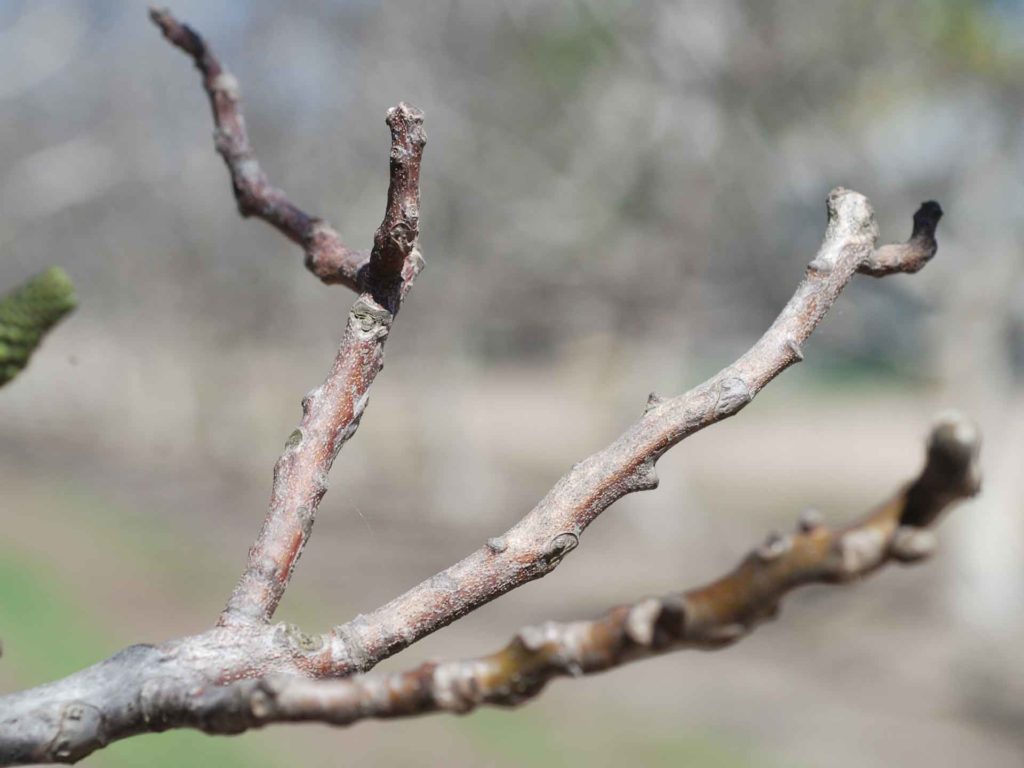
Disease Management
Reduce Pathogen Inoculum
Because of the nature of this disease causing dead wood and colonizing dead wood because of other causes (excess shade; severe scale infestation, etc.) and killing spurs, removal of these tissues is very important, particularly the large branches whose the entire surface could be covered with a continuous blanket of pycnidia and/or pseudothecia of Botryosphaeriaceae and Phomopsis fungi.
Certainly it is not possible to remove individual spurs but as those age on the tree, many break during mechanical shaking of trees at harvest. Because the majority of these spurs will end up in the debris sorted out in huller, it is very important to compost them first before returning them to the orchards. When pruning is planned in an orchard, removal of large dead and blighted branches can be done just after harvest when it is still easy to distinguish what is dead and what is alive on a tree. For the pruning brush disposal see Table 2.
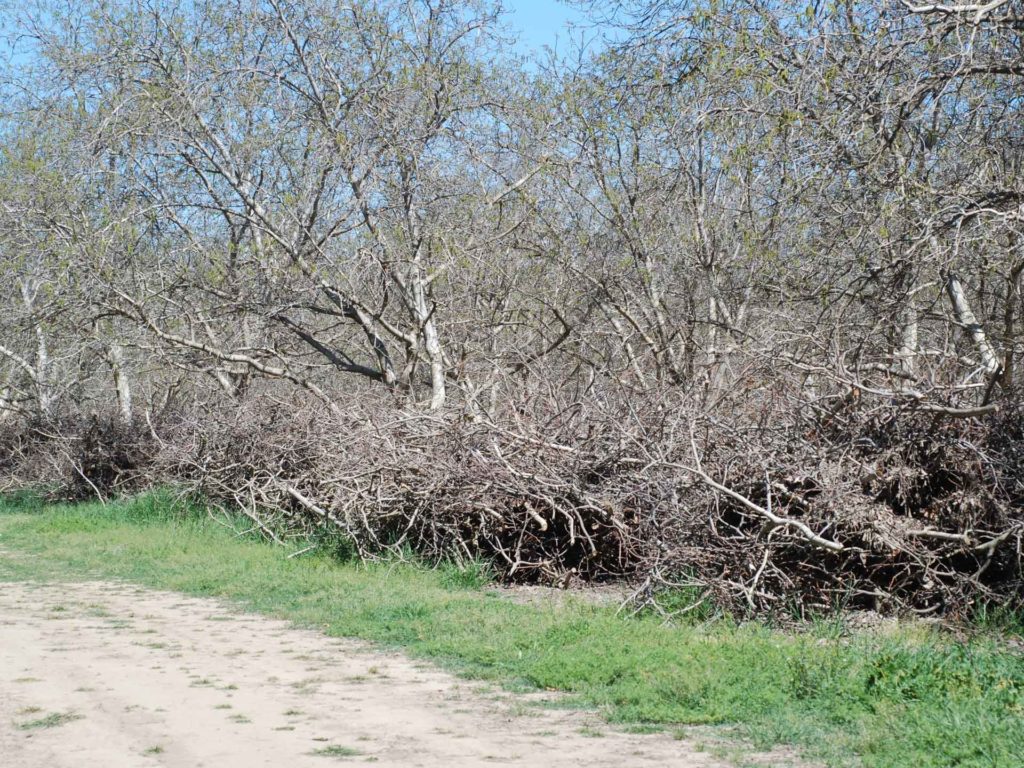
Chemical Control
Based on fungicide efficacy trials, we were able to register a number of effective fungicides that are listed in Table 3. Table 3 is an excerpt from the document: ipm.ucanr.edu/PDF/PMG/fungicideefficacytiming.pdf which among other crops includes walnut.
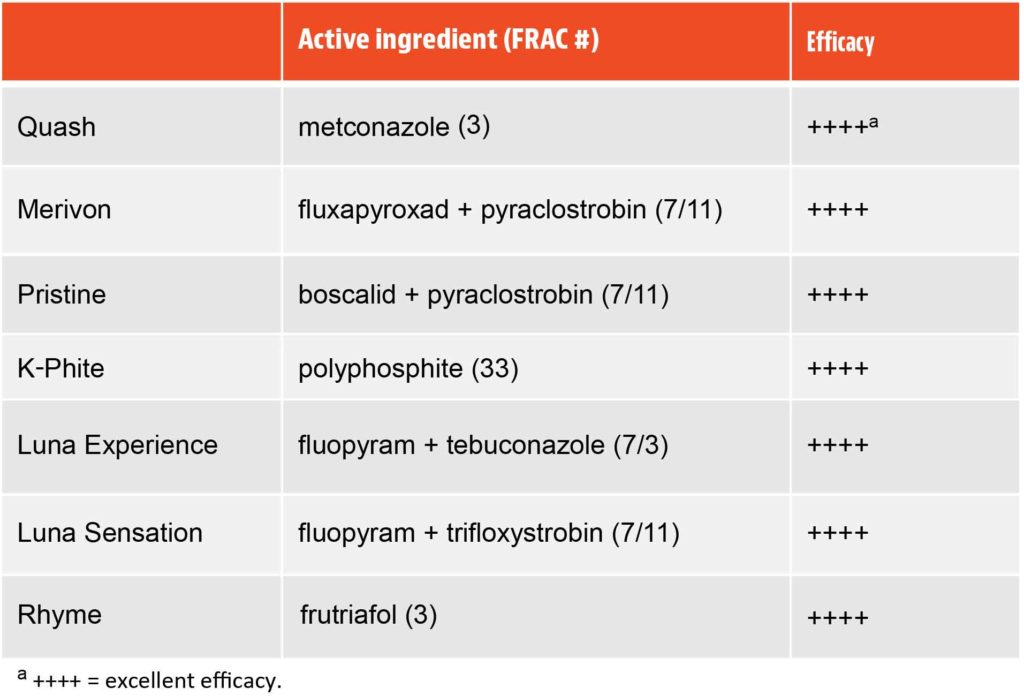
There are three options for timing of fungicide sprays. The first option is one spray and this can be done in the second part of June to the first part of July. The second option is for three to four sprays: these will be the first in mid-April (bloom), the second in mid-May, the third in mid-June, and the fourth and final in mid-July. This is a program that pest control advisors like to recommend to growers who plan to use a full control program. The third option is to use a leaf wetness model which depends on the weather conditions and it is based on the infection events determined by at least ¼ inch wetness (rain) and at least 50 F. Using the leaf wetness model is more applicable for orchards located in areas where few to several spring rains can occur.


